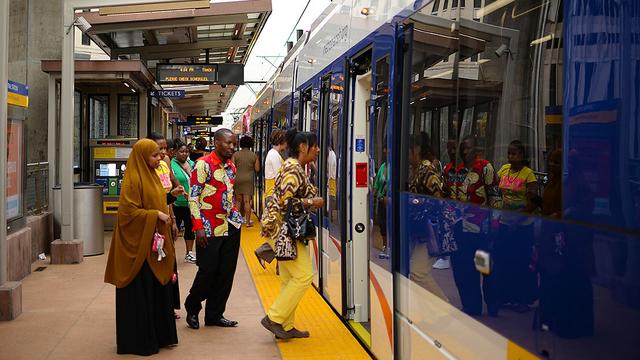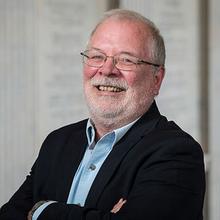When the coronavirus pandemic is brought under control, will telecommuters head back to the office? How can we ensure transportation equity for all people? What role will connected and automated vehicles (CAVs) play? The answer to these questions, and many others, will have a major impact on transportation and society.
As its members began to consider budgets and policies for the upcoming biennium and beyond, the Minnesota House Transportation Finance and Policy Committee held two informational hearings in January on the future of transportation in a post-pandemic world.
At the request of committee chair Rep. Frank Hornstein, the University of Minnesota’s Center for Transportation Studies organized presentations by a range of experts. Four researchers from the Humphrey School were among the presenters: Yingling Fan, Frank Douma, Lee Munnich, and Adeel Lari.
The multimodal future of transportation equity
COVID-19 upended transit ridership—in Minneapolis, for example, ridership is down about 60 percent. The pandemic also exacerbated transportation inequities.
“As whites rapidly abandoned buses and trains, minority and low-wage essential workers kept riding,” said Professor Yingling Fan, an expert on urban and regional planning.
These trends contrast with the findings of pre-pandemic engagement efforts by University researchers. When Twin Cities residents were surveyed about their preferred future transportation modes, “communities overwhelmingly said the integration of modes is very important, and that public transportation is very important,” Fan said. Autonomous vehicles ranked next, followed by ridesharing and personal vehicles.
Photo: Bruce Silcox
According to the latest research, Fan said, advancing transportation equity entails three pillars:
- Creating multimodal transportation systems that are affordable, sustainable, reliable, efficient, safe, and easy to use.
- Ensuring that quality transportation services are accessible to all populations for reaching destinations independently if needed.
- Supporting fair decision-making processes that promote diversity and incorporate meaningful public engagement, so that all populations, particularly underserved and underrepresented populations experiencing long-standing disparities, can achieve positive social outcomes.
Emerging technologies make this a great time to redefine public vs. private transportation, Fan continued. Traditionally, public modes were defined as high-capacity vehicles such as buses and light rail, but a new definition from the Federal Transit Administration includes any shared passenger vehicle. The new shared modes present opportunities for innovative public-private partnerships and may help reduce social isolation in urban and rural areas.
Taking a holistic perspective on mobility will be important. “It’s about creating livable urban and rural communities,” Fan said. “How can we create the kind of places we want to live in?”
In addition to public-private partnerships, Fan says partnerships across agency levels will be needed, and integrating transportation and land-use planning will also be important.
Connected and automated vehicles
From a public policy perspective, safety is one of the main reasons for interest in connected and automated vehicles (CAVs), said Frank Douma, director of the Humphrey School’s State and Local Policy Program (SLPP). In 2020, traffic fatalities went up in Minnesota even though miles traveled were down. Estimates are that 90 percent of vehicle crashes are due in part to human error—and vehicle technologies can help reduce the number of crashes.
Photo: Bruce Silcox
CAVs are evolving and might first appear broadly in the near future as autonomous micro-shuttles in passenger fleets, Douma said. Carrying 12 to 15 passengers, these vehicles could fill last-mile transit gaps or provide service on campuses, traveling at low speeds on a preprogrammed fixed course. MnDOT demonstrated a similar test vehicle at various sites in 2017–2018.
The private sector is making significant investments in this technology. Manufacturers include Minnesota’s Polaris as well as VW, a GM and Honda partnership, and Amazon’s Zoox.
“It’s important that we think about this from a public policy perspective and be ready for these developments,” Douma said.
CAVs could also appear soon for driverless package and grocery delivery—essentially, as pods on wheels. New business prospects could arise for supply chains and the freight industry.
“There are many other opportunities where we’re going to see this technology in more of a fleet environment,” Douma said.
Other benefits of CAVs include improved accessibility and equity for people unable to drive. CAVs could also help address the driver shortage for transit systems, especially in rural areas, and enable increased service frequency and hours.
Douma’s closing message: “We should get this technology out in front of the public so that they can understand it’s real and that it’s going to be viable in ways they might not otherwise expect.”
Emerging issues in transportation finance
Lee Munnich, a senior researcher with SLPP, reviewed two emerging issues in transportation finance: distance-based fees and public-private partnerships.
With more fuel-efficient and electric vehicles on the road, the fuel tax becomes less effective and less equitable, Munnich said. An alternative approach is distance-based fees, also known as mileage-based user fees, road usage charges, or vehicle-miles traveled fees. In essence, drivers would be charged a fee based on how many miles they drive their vehicle, rather than how much gasoline it consumes.
Photo: Bruce Silcox
Much has been happening in this field in the recent years. Several states have completed pilot projects or are monitoring how the technology might move forward, and regional coalitions are also forming, particularly on the east and west coasts.
“This isn’t happening so much in the Midwest,” Munnich noted, although MnDOT and the Mid America Association of State Transportation Officials have discussed some of these options.
Minnesota has been a national leader in evaluating distance-based fees for decades, starting with a legislative proposal in the 1990s. In 2008 the Legislature approved and funded a pilot MnDOT study, and in 2011 a user-fee policy task force was created. In 2017, MnDOT received federal funding to study the use of in-vehicle technology for collecting a distance-based fee from car-sharing companies.
“Implementing a distanced-based user fee won’t be like flipping a switch,” Munnich said. “We will have the gas tax for long time.”
Public-private partnerships (P3s), a second finance alternative, are used by many states in various ways, Munnich said. The most recognizable example is a toll road, where drivers must pay a fee to drive on that road.
Some states use concessions to build new facilities or convert existing facilities to private ownership. P3s transfer some of the risk and a degree of ownership to the private sector and make more effective use of private-sector investments; different types of P3s have different levels of risk.
Telecommuting Impacts of COVID-19
Telecommuting has become the norm for many Minnesotans during the COVID-19 pandemic, said Adeel Lari, director of innovative financing with the SLPP.
Remote work has distinct advantages in these socially distanced times but also comes with equity concerns, since some jobs—such as those in retail, construction, and hotels—are impossible to do online. These jobs also tend to be the ones held by workers with the lowest incomes. Read more about Lari’s research into telecommuting.
All the presentations are available on the Minnesota House archives site.
- January 14, 2021, hearing: Yingling Fan (0:28:55 – 0:39:50)
- January 19, 2021, hearing: Frank Douma (0:4:00 – 0:17:50); Adeel Lari (0:56:00 – 1:07:00); Lee Munnich (1:08:55 – 1:18:12)
This story was adapted from a House news post and a Center for Transportation Studies newsletter article.





